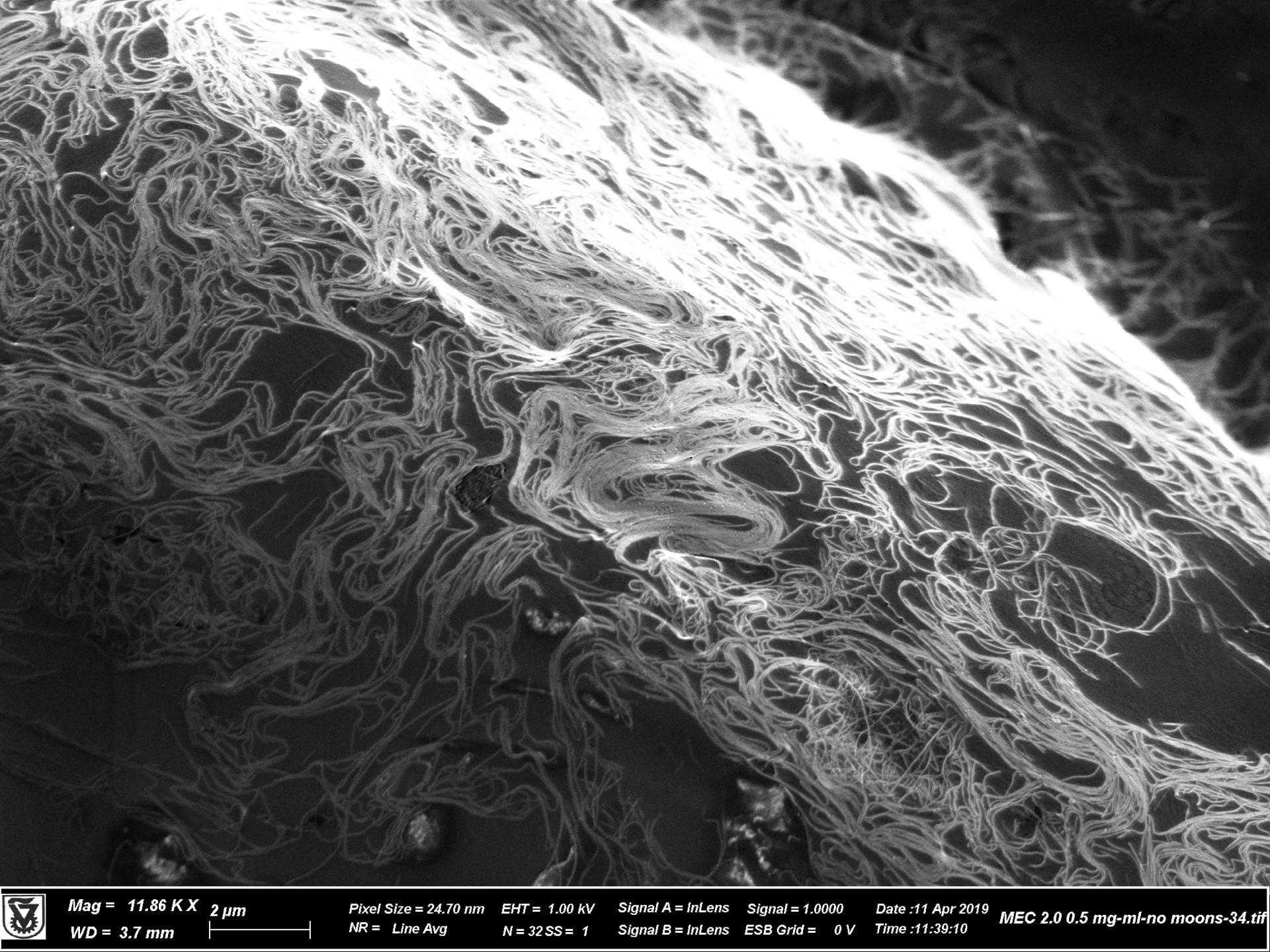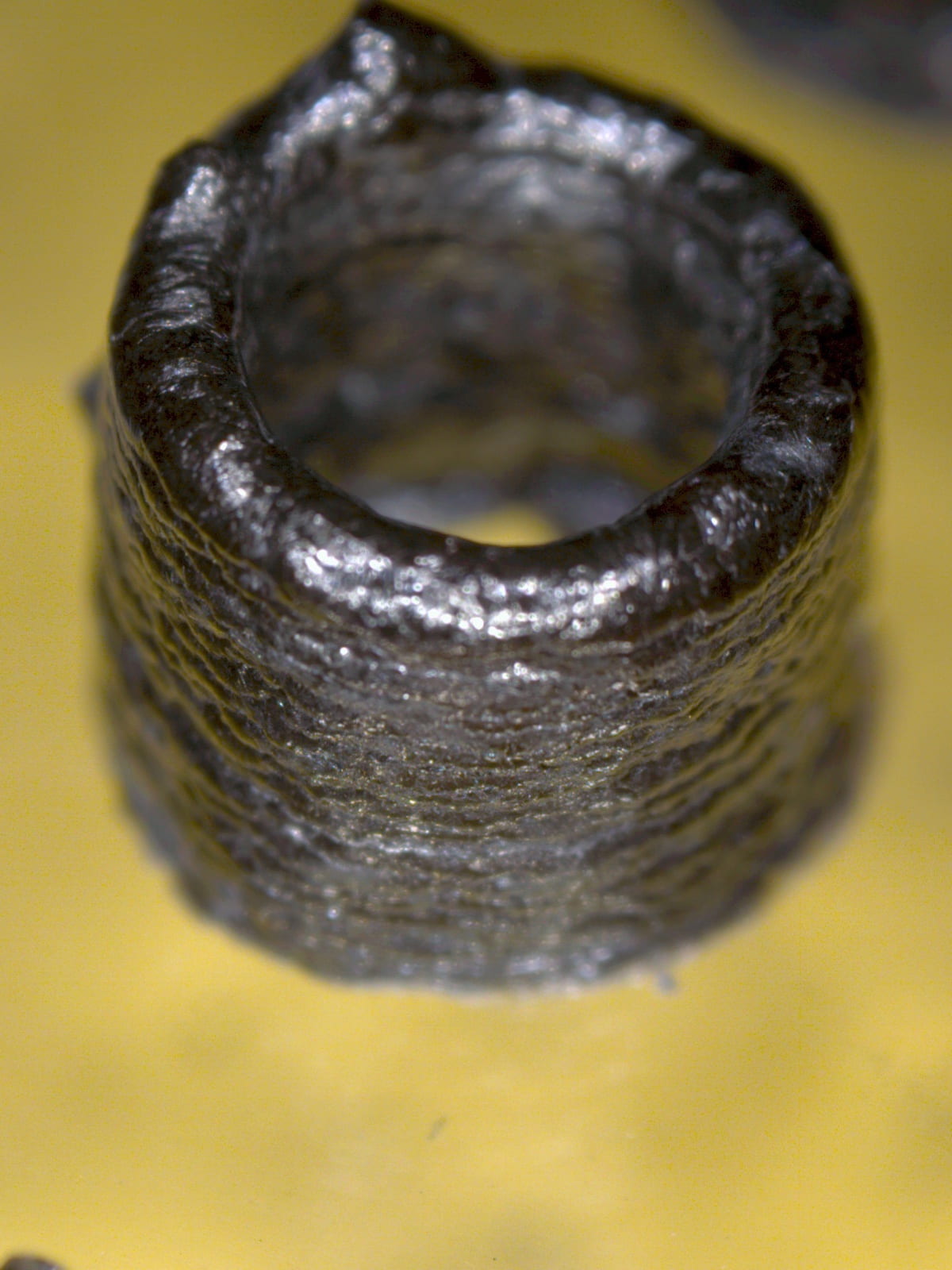Researchers from Rice University have developed a novel acid-based solvent that prevents the spaghetti effect that commonly occurs when carbon nanotubes tangle together.
As well as being compatible with conventional manufacturing processes, the solvent has the potential to simplify the processing of carbon nanotubes to enable the scale-up of industrial 3D printing and roll-to-roll production applications.
“There’s a growing realization that it’s probably not a good idea to increase the mining of copper and aluminum and nickel, said Matteo Pasquali, Professor of Chemical and Biomolecular Engineering, Chemistry and Material Science and Nanoengineering at Rice University. “But there is a giant opportunity to use hydrocarbons as our ore.
“In that light, we need to broaden as much as possible the range in which we can use carbon materials, especially where it can displace metals with a product that can be manufactured sustainably from a feedstock like hydrocarbons.”

3D printing carbon nanotubes
Since their discovery back in 1991, carbon nanotubes have been hailed as being up to a hundred times stronger than steel, harder than diamonds, and a thousand times more conductive than copper. While studies have proposed a range of potentially significant industrial applications of carbon nanotubes, such as electronics and water purification filters, the technology is still very much in development.
At present, carbon nanotubes can be utilized to develop composite materials that have superior mechanical, thermal, and conductive properties, however, leveraging them for 3D printing still presents significant challenges.
So far, carbon nanotube materials have been used to 3D print shape memory polymers for use in soft robotic applications, and due to their biocompatibility have also been used to 3D print tissue scaffolds.
In April last year, Arizona-based start-up Mechnano exited stealth mode in the R&D of its carbon nanotube technology for 3D printing materials with the launch of its electrostatic discharge (ESD) resin. The firm claims to be the first to have fabricated parts with carbon nanotubes using material jetting and vat photopolymerization systems, and believes its technology will bring “dramatic changes” to industries such as aerospace, defense, medical and automotive.

Untangling nanotube spaghetti
One of the challenges of processing carbon nanotubes is their susceptibility to tangling, reflective of the dreaded “spaghetti” effect when a print job goes wrong, which until now has prevented researchers from realizing their full potential.
According to the Rice University team, separating the nanotubes is a necessary step before they can be extruded during 3D printing or where shear forces transform them into familiar fibers or sheets.
The team has developed an acid-based solvent that helps to separate tangled nanotubes in a solution and turn them into films, fibers, or other materials that exhibit excellent electrical and mechanical properties. The solvent is made up of a unique combination of acids, namely methanesulfonic (MSA), p-toluenesulfonic (pToS), and oleum acids, that when combined are less corrosive than those currently used within nanotube processing.
Oleum and chlorosulfonic acids have been used to separate nanotubes for some time, however are highly corrosive. Combining oleum with the weaker MSA and pToS acids has enabled the creation of a broadly applicable process allowing new manufacturing opportunities for carbon nanotube parts.
“The oleum surrounds each individual nanotube and gives it a very localized positive charge,” said Robert Headrick, a graduate alumnus of Rice University involved in the study and current Research Scientist at Shell. “That charge makes them repel each other.”
After the detangling stage, the MSA and pToS acids further separate the nanotubes. The researchers observed MSA was best-suited to fiber spinning and roll-to-roll film production, while pToS is suited to 3D printing applications due to its 40 degree celsius melting point allowing nanotube solutions to be processed at a moderate temperature then solidified by cooling.
The team then used the stable liquid crystalline solutions to 3D print carbon nanotube aerogels, as well as silk screen printing patterns onto a range of different surfaces. They found that MSA and pToS did not give off harmful fumes during the process and were easily cleaned up afterward. The acids can also be recycled after the process has been completed, lowering environmental impact, energy, and processing costs.
“The acids we’re using are so much gentler that you can use them with common plastics,” added Headrick. “That opens the door to a lot of materials processing and printing techniques that are already in place in manufacturing facilities.
“It’s also really important for integrating carbon nanotubes into other devices, depositing them as one step in a device-manufacturing process.”
Fine-tuning the next steps
The Rice University team’s research was supported by several notable organizations, including the Air Force Office of Scientific Research, the US Department of Energy, the NASA Space Technology Research Institute, and the Robert A. Welch Foundation.
The next step for the team is to fine-tune the solvent for various specific applications and to determine how factors like chirality, when an object is distinguishable from its mirror image, and size affect nanotube processing. The researchers also pressed the importance of achieving high-quality, clean large diameter tubes.
Further information on the study can be found in the paper titled: “Versatile acid solvents for pristine carbon nanotube assembly,” published in the Science Advances journal. The study was co-authored by R. Headrick, S. Williams, C. Owens, L. Taylor, O. Dewey, C. Ginestra, L. Liberman, A. Ya’akobi, Y. Talmon, B. Maruyama, G. McKinley, A. Hart, and M. Pasquali.
Subscribe to the 3D Printing Industry newsletter for the latest news in additive manufacturing. You can also stay connected by following us on Twitter and liking us on Facebook.
Looking for a career in additive manufacturing? Visit 3D Printing Jobs for a selection of roles in the industry.
Subscribe to our YouTube channel for the latest 3D printing video shorts, reviews, and webinar replays.
Featured image shows a spaghetti-like tangle of carbon nanotubes seen in this microscope image will no longer be an issue when processed with a solvent developed at Rice University. Image via Pasquali Research Group/Rice University.


